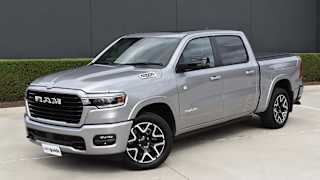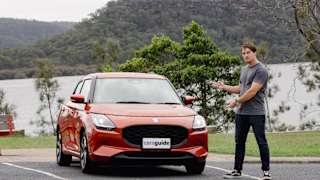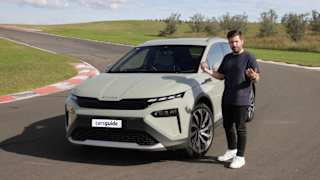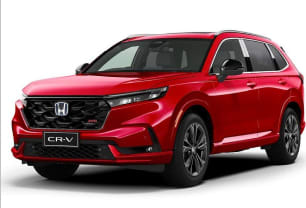Little wonder the CR-V was the world's third most-bought SUV worldwide in 2023. It's big enough for most families' needs... and then some.
This is immediately apparent the moment the big doors are opened up nice and wide, revealing an airy, spacious and extremely user-friendly interior.
The Japanese brand has striven successfully for greater visual symmetry, harmony and operational simplicity in the dashboard's design and layout.
And, sure, the 9.0-inch touchscreen lacks the wow factor of vast buttonless displays as found in flashy alternatives such as the disappointing Chery Tiggo 7, but it works very effectively.
Hondas have always nailed the driving position bit down pat, and the RS is no exception, with ample seat and steering column adjustment, considered controls placements and unimpeded views of the instrumentation and road ahead due to the aforementioned thin pillars.
The instrumentation cluster is an electronic set-up offering the driver the choice of either super crisp and ultra-clear analogue dials, or somewhat fussier bar graphs, with a digital speedo augmenting both.
There's so much to enjoy and so little to criticise inside Honda's mid-sized SUV. Along with space to stretch, the front seats are notably comfortable and supportive, as several hundred kilometres sat ensconced in them proved. Both sides have electric adjustment at this price point, too.
Ventilation also rates highly, with the honeycomb full-dash-length grille and lovely toggle switches bringing aesthetic and tactile delight, respectively.
And, reflecting the CR-V's US focus, storage is on a large and helpful scale, offering bottle holders in the doors amongst other places to stash things in and on.
Moving to the rear seat area, entry/egress is ridiculously unimpeded, with a decently-shaped bench.
Families are also likely to appreciate series-best legroom, backed up by a handy amount of girth – always a good thing.
You're also met with occupant-facing air vents, overhead grab handles, even more door storage, the obligatory folding centre armrest with cupholders, front-seat-sited map pockets and a pair of USB-C outlets.
However, the standard sunroof does rob some headroom so people taller than about 180cm had better try before they ride, though the 60/40 backrest reclines to 16 positions and that's helpful here.
Being a hybrid, the RS e:HEV misses out on the sliding bench which adjusts by 190mm in other CR-Vs.
Vision out is exemplary back there, enhancing an already spacious and airy ambience. But if the front seat area majors on Japanese quality, the rear is hardly premium, with plenty of dreary cheap plastic trim, betraying the Honda SUV's focus on the price-driven American market. But nothing squeaked, rattled or broke, thankfully.
Further back, the tailgate rises remotely quickly enough, and there's quite a wide and long area to store things, but the electrification elements make for quite a high and uneven floor – though a deep bin area is also provided to hide stuff in.
There's also just a can of goo in lieu of a spare wheel.
Cargo capacity rises compared to the previous CR-V, ranging from 589 litres with the rear seats up, to 1636L, or 1072L if measured only to the window line.











.png)










































.png)





















 copy.png)














